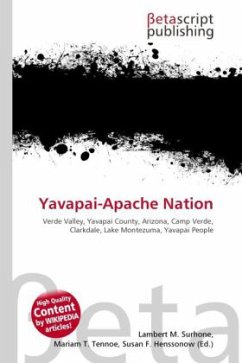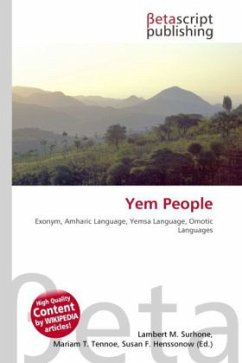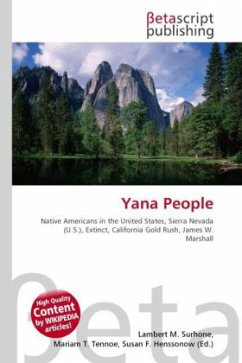
Yavapai People
Versandkostenfrei!
Versandfertig in 6-10 Tagen
26,99 €
inkl. MwSt.

PAYBACK Punkte
13 °P sammeln!
High Quality Content by WIKIPEDIA articles! Yavapai (sometimes translated as mouthy, or talkative people, but generally translated as People of the Sun because they worshipped the sun. The Western Yavapai call themselves Tolkapaya, the Northeastern Yavapai call themselves Yavapé, the Southeastern Yavapai call themselves Kwevkapaya, and the fourth group call themselves Wipukpa. Another Yavapai band would be the Matakwadapaya. This group is believed to have mixed with the Mohave and Quechan and no longer exists, but several Mohave and Quechan families trace their family history to Yavapai roots...
High Quality Content by WIKIPEDIA articles! Yavapai (sometimes translated as mouthy, or talkative people, but generally translated as People of the Sun because they worshipped the sun. The Western Yavapai call themselves Tolkapaya, the Northeastern Yavapai call themselves Yavapé, the Southeastern Yavapai call themselves Kwevkapaya, and the fourth group call themselves Wipukpa. Another Yavapai band would be the Matakwadapaya. This group is believed to have mixed with the Mohave and Quechan and no longer exists, but several Mohave and Quechan families trace their family history to Yavapai roots. The Yavapai have much in common, with their neighbors the Havasupai, the Hualapai, and the Athabascan Apache. Often, Yavapai were mistaken as Apache by White settlers, variously being referred to as "Apache-Mohave" or "Tonto-Apache". Before the 1860s, when White settlers began exploring for gold in the area, the Yavapai occupied an area of approximately 20,000 mi² (51800 km²) bordering the San Francisco Peaks on the north, the Pinal Mountains on the east, and Martinez Lake and the Colorado River at the point where Lake Havasu is now on the west.












